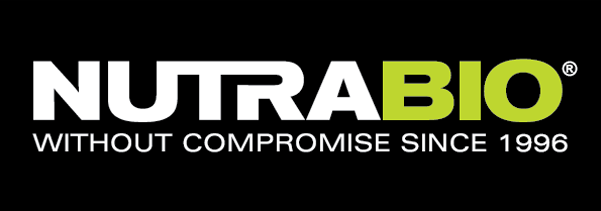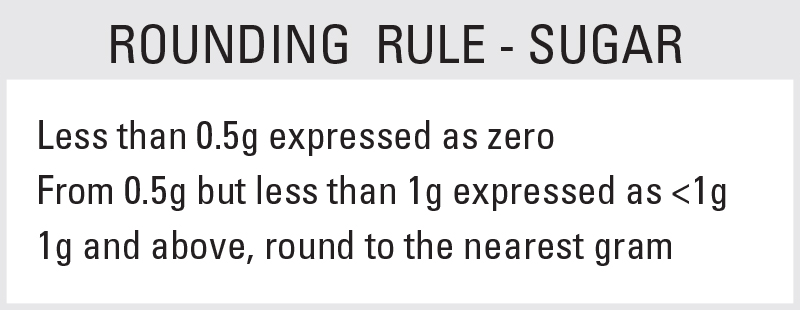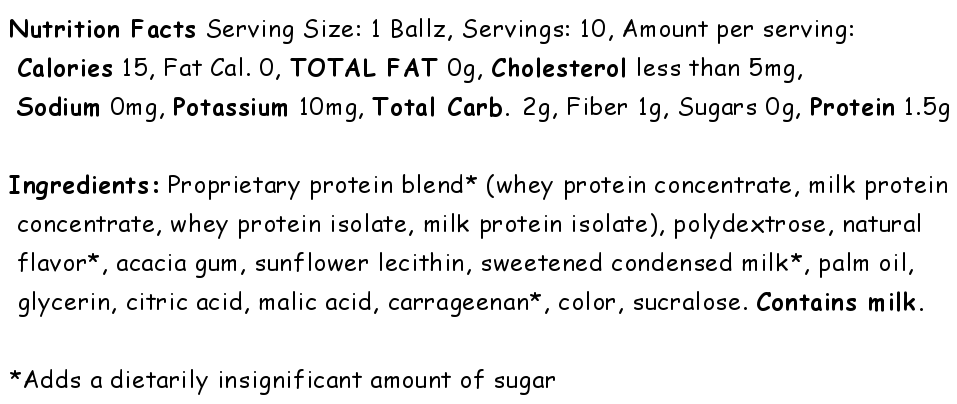"Supplement math".
That's the phrase we love to use when we see a label that's just not adding up.
We find ourselves saying it when a label’s active ingredients cannot possibly add up to what the serving size states, an unfortunately not-uncommon occurrence. Oftentimes, it's fueled by a ridiculous proprietary blend, and at other times, it's simply a label with [illegal] mistakes.

Mark Glazier's post is eye-opening, but we had to fact-check it and provide a real-world example. Read on to see where we differ! Image courtesy NutraBio.
Recently, Mark Glazier of NutraBio fame wrote an article titled Supplement Brands using regulations to rip you off? Say it ain’t so...[1] -- and in this article, he detailed how a supplement brand can use the FDA's own regulations on rounding to rip you off!
Mark explains it very well, so in this post I want to do two things:
- Find and cite the FDA's laws that Mark discusses, and
- Find an actual real-world example and how it was "executed" across multiple parties. (Click this link to skip down if you already know the laws)
Understanding nutrition rounding laws
Before understanding the scam, you need to understand the laws. The best page to see the rounding laws for nearly everything is on the FDA's pages for Attachments 6-8 in their Guide to Nutrition Labeling and and Education Act (NLEA) Requirements.[2] Each item points to the exact CFR (Code of Federal Regulations) we need specifically.
NutraBio's post uses three images we'll gracefully steal without their permission:
-
Protein Label Rounding Rule
Less than 0.5g is expressed as zero; 0.5g but less than 1g is expressed as <1g; otherwise, round to the nearest gram. Image courtesy NutraBio.
Citation: 101.9(c)(7)[3]
Text to Search For:“Protein”: A statement of the number of grams of protein in a serving, expressed to the nearest gram, except that if a serving contains less than 1 gram, the statement “Contains less than 1 gram” or “less than 1 gram” may be used as an alternative, and if the serving contains less than 0.5 gram, the content may be expressed as zero.
The section continues, and gets into %DV for age demographics and then protein quality, where it mentions the whole the statement “not a significant source of protein” area for low-quality proteins... which is subject of a different scam used in collagen-based protein products, including some beef proteins... but that's another story for another day.
-
Carbohydrate, Sugar, or "Other Carbohydrate" Label Rounding Rules
Same as protein:
Less than 0.5g is expressed as zero. An amount of 0.5g but less than 1g is expressed as <1g. Otherwise, round to the nearest gram. Image courtesy NutraBio.
Citation: 101.9(c)(6) for total carbohydrate, 101.9(c)(6)(ii) for sugar, and 101.9(c)(6)(iv) for other carbohydrate.[3]
Text to Search For (from the total carbohydrate section):
“Carbohydrate, total” or “Total carbohydrate”: A statement of the number of grams of total carbohydrate in a serving expressed to the nearest gram, except that if a serving contains less than 1 gram, the statement “Contains less than 1 gram” or “less than 1 gram” may be used as an alternative, or if the serving contains less than 0.5 gram, the content may be expressed as zero.
There are separate sections on the sugars, but they function the same.
-
Fat Label Rounding Rule
Citation: 101.9(c)(2)[3]Less than 0.5g is expressed as zero. From 0.5g to less than 5g, round to the nearest 0.5g. For over 5g, round to the nearest gram. Image courtesy NutraBio.
Text to Search For:“Fat, total” or “Total fat”: A statement of the number of grams of total fat in a serving defined as total lipid fatty acids and expressed as triglycerides where fatty acids are aliphatic carboxylic acids consisting of a chain of alkyl groups and characterized by a terminal carboxyl group. Amounts shall be expressed to the nearest 0.5 ( 1⁄2 ) gram increment below 5 grams and to the nearest gram increment above 5 grams. If the serving contains less than 0.5 gram, the content shall be expressed as zero.
Long story short? Beware of ultra-small protein servings (say, under 10g) where the fats and carbs are mysteriously low...
So now we know that Mark's not lying -- which is unsurprising since he's the most prominent non-lawyer industry expert on this kind of thing -- we can quickly talk about the scam and then get a real world example.
How does the label rounding scam work?
Long story short, the scam effectively works like this:
- Use small serving sizes that get you good looking carb or fat numbers (ie under 0.5g which then round down to 0g)
- "Suggest" the customer use multiple servings
- The inexperienced consumer thinks they're getting a zero carb product all along, but they're really not.
But protein powders aren't the biggest problem...

No 6g 'servings' here! Pictured: NutraBio Muscle Matrix
Where we differ from Mark's analysis is the type of product used as an example. As founder of NutraBio, Mark lives, dies, and breathes protein powder. He has literally thrown away more protein than our team could eat in three lifetimes.
So in his post, he mentions seeing a protein powder running the above scam, claiming 6g "convenience" servings and telling you to use as many as it takes to meet your goals.
So if you wanted to take five of these "servings", In your head, you'd multiply those 0g carbs to 0g, but that's not the truth -- it'd end up more like 27g protein and 2.48g fat and 1.77g alongside 27g protein, instead of 0g / 0g / 30g.[1] That's how the rounding scam works, long story short.
Problem is, we've never seen a protein powder claiming 6g serving sizes. Nearly all protein powders on the market are somewhere between 20g and 25g protein and have only a minimal amount of rounding... and thus not too much scamming (at least not in this manner - see the amino acid spiking scam for an even shadier method).
Not saying these 6g serving sizes aren't out there (leave a comment if you do know of any), but in our corner of the world, this isn't really where the major multiplication/rounding problem is.
Instead...
It's the protein snacks!
Here lies our real problem -- those "high protein snacks" and "functional foods" we keep seeing!! You know, little bags of protein-enhanced chips, nuts, seeds, 'bites', balls, "fun-sized" mini-bars, etc.
Knowing this industry, you can bet your ass that anything that can be divided up into small pieces will be done so very carefully...
So below, we list a real-world example with a product that is now discontinued, and truth be told, the product's nutrition facts label was indeed legal. The "multiplication rounding scam" was actually perpetrated in public view by a few prominent stores, which makes things even more interesting and conspiratorial.
Two-step supplement scammin'
This product, which I actually did like one variation of, was all about those bite-sized servings. Let's call them ballz, with a 'z' of course, because you know how much we love that letter.
Their own label looked something like this, with a few details (such as %DV) removed:
Of course few people will eat just one of these 'ballz', but hey, some people may only need one, so technically speaking there's nothing totally wrong going on here.
However, the product's own marketing had something that looked like this on the container (which we'll call a bucket):

Artist's Rendition. This is on the packaging, but is not the actual label. Notice how protein is highlighted by the bucket, but fats/carbs by the ballz? That should be a red flag to you.
At this point, you might already see some confusion... the protein stat is calculated across the entire bucket, but the calories, carbs, fat, and sugar are calculated by the ballz. Not cool, and perhaps one would argue this didn't help product sales.
Yet the nutrition label on the product itself was technically kosher. Remember, as Mark says, this is legal, unless you want to argue a false advertising case.
The stores do the dirty
To finish the job, the stores join the party next. In fact, at least two extremely prominent stores were in on this one!
Instead of showing the product's nutritional facts label (ie by one ballz per serving), they actually just did the multiplication across the entire bucket of ballz!!
It looks something like below, which is a modified international label that is under a different jurisdiction (just note that US stores did it as well):

This was done internationally so it's not under the purview of the US FDA, but can a store simply multiply the number of ballz in a bucket to come up with these numbers and advertise that? At this point, our math has this at >0g fat, and sugar as well. Similar things happened in US stores as well.
Given that at least half of that 15g protein was whey concentrate-based, using the best form (WPC-80), your best case scenario has you using roughly 8.8g WPC-80 to get its portion of the 15g protein (see math to the side)... and 8.8g WPC-80 puts you over 0.5g fat.
Yet the stores didn't disclose that, and instead advertised it as 0g fat, which is clearly false, and that's not even counting the additional oils added!
We're not sure why the stores would put up a label that is different from the actual product's label... and whose choice it was to do that, but here we had a vested party actually publishing Mark's hated multiplication scam right there to the consumers - no mental math even needed!
Chances are, it was done because this product was sold with multiple buckets in a box, and they wanted to break it down at the bucket level. But in order to do that, they had to perform some math - math that was no longer valid and was likely illegal.
But who was to blame? The brand? Or the store? We're thinking the latter in this case, at least from an outsider's perspective without seeing wikileaks drop some of those crazy internal emails.
Either way, this division of irresponsibility adds to some form of plausible deniability, taking Mark's example (and possibly his blood pressure with it) to a whole new level - and right there to the consumer's face!
Conclusion: Beware the Bucket of Ballz Betrayal

Sign up for alerts on our NutraBio page, because they may have something coming to take transparency to the nextest level!
Long story short? Beware of ultra-small protein servings (say, under 10g) where the fats and carbs are mysteriously low... and you'll most likely find it happening in the "protein snack" department - not the powders.
The solution? Full label transparency. That's where The NutraBio Story comes in... and rumor has it that they have something big coming soon, so stay tuned by signing up for alerts on our NutraBio page.






Comments and Discussion (Powered by the PricePlow Forum)